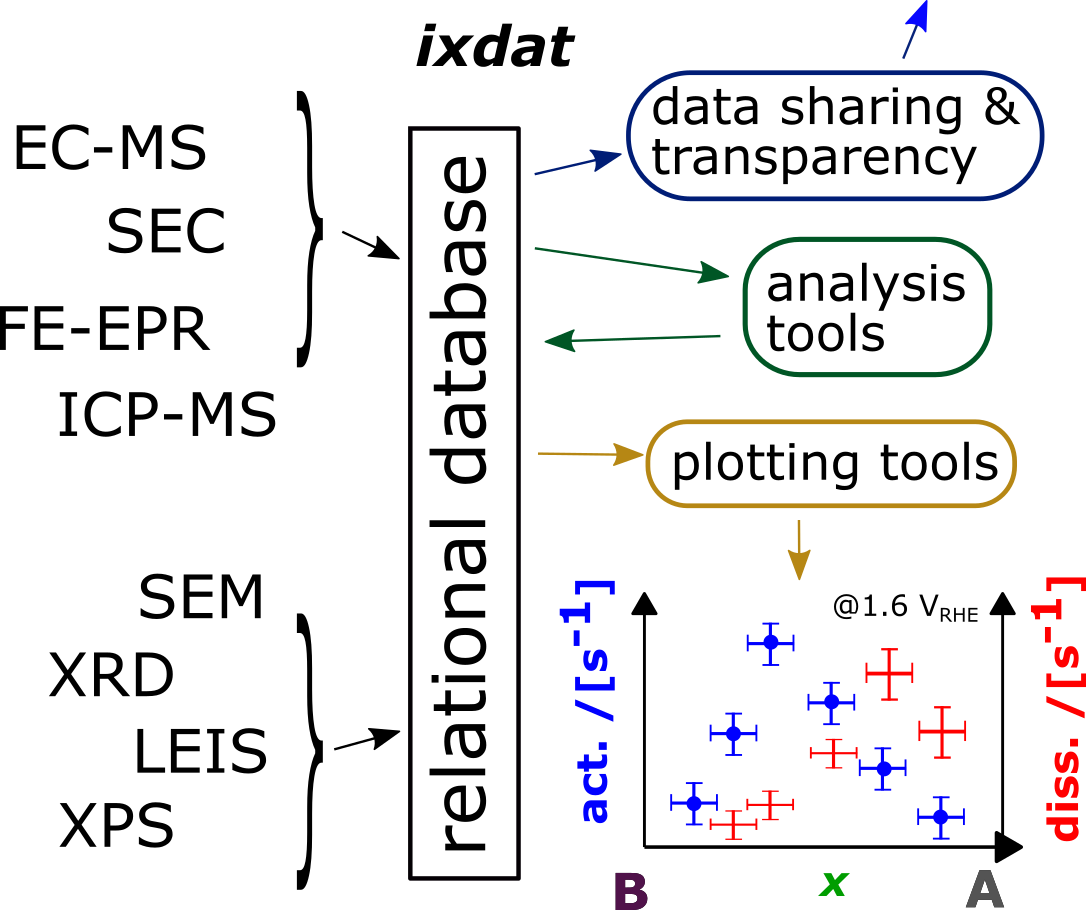Introduction¶
ixdat provides a powerful object-oriented interface to experimental data,
especially in-situ experimental data for which it is of interest to combine data obtained
simultaneously from multiple techniques.
In addition to a pluggable reader interface for importing your data format, it
includes pluggable exporters and plotters, as well as a database interface.
For the philosophy behind ixdat, see Extended concept.
ixdat is free and open source software and we welcome input and new collaborators.
See Developing ixdat.
Supported techniques¶
| Measurement technique | Status | Readers |
|---|---|---|
| Electrochemistry | Released |
|
| Mass Spectrometry | Released |
|
| Electrochemistry - Mass Spectrometry (EC-MS) | Released |
|
| Spectro-Electrochemistry | Released |
|
| X-ray photoelectron spectroscopy (XPS) | Future | |
| X-ray diffraction (XRD) | Future | |
| Low-Energy Ion Scattering (LEIS) | Future |
Installation¶
To use ixdat, you need to have python installed. We recommend
Anaconda python.
To install ixdat, just type in your terminal or Anaconda prompt:
$ pip install ixdat
And hit enter.
ixdat is under development, and to make use of the newest features,
you may need to upgrade to the latest version. This is also easy. Just type:
$ pip install --upgrade ixdat
